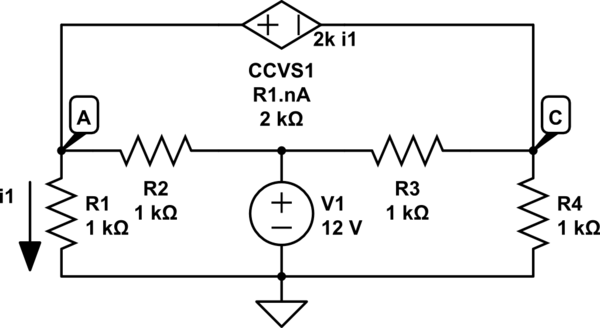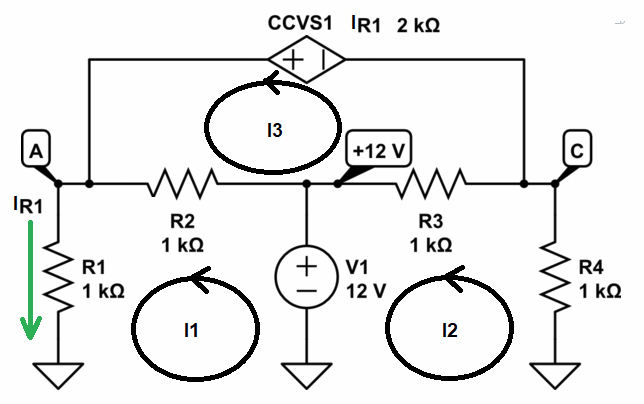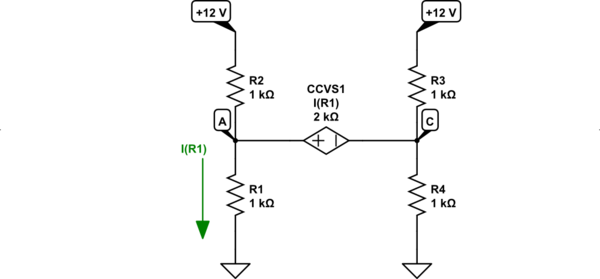This is an exercise from Irwin's book, 9th edition.

simulate this circuit – Schematic created using CircuitLab
Although the book calls for the use of nodal analysis, I decided to do it by mesh analysis (this is what I am currently training).
The question asks for the value of VC. After performing Mesh Analysis, I arrived at the matrix equation:
$$\begin{pmatrix} 2 &-3 &-1 \\ -1 &2 &0 \\ -1 &0 &2 \end{pmatrix}\begin{pmatrix} i_A\\ i_B\\ i_C \end{pmatrix}=\begin{pmatrix} 0\\ -12m\\ 12m \end{pmatrix}$$
Whose determinant is zero.
When I found a solution book on the internet, performing a nodal analysis, I arrived at the value of VC = 9 V. However, when performing the Super Node Equation, it considers VC - VA = 2·k·I1, which does not seem correct to me.
Anyway, am I wrong in assuming that there is no solution for this circuit? In case there is no such solution, what explanation could I have for this?
Thinking about the idea of building a circuit, it bothers me a bit that they don't have a solution. Is this due to the topological restrictions imposed by Kirchhoff's Law and Ohm's Law? Or is it a flaw in the theory trying to describe a real physical system?
Is my assembly in the simulator correct? In particular, how to realize the current-controlled voltage source?



